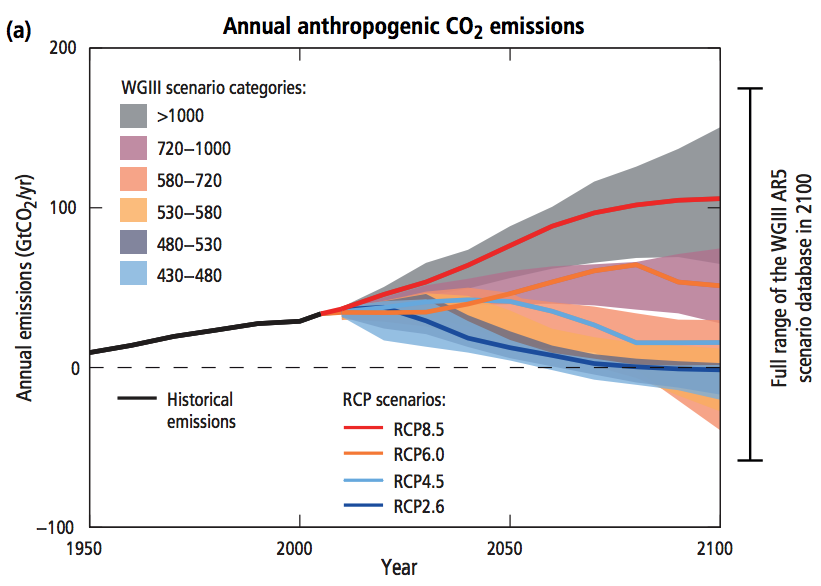10 Things to Know About the IPCC Scenario Framework

Summary
The new generation of IPCC-led scenarios are constructed from a combination of representative concentration pathways and associated radiative forcing, socioeconomic pathways and climate policy assumptions. These aspects define the three dimensions of the scenario matrix; a framework for exploring contingencies, uncertainties and costs in the changing climate of future worlds.
This article* is aimed at anyone seeking a referenced overview of what constitutes IPCC scenarios and provides detailed answers to the questions below. This article could be read in conjunction with the SENSES web tool for understanding scenarios, which gives more information about the characteristics of SSPs, use of Integrated assessment models (IAMs), the feasibility of reaching emissions targets according to different IAMs, how climate models work, and example projections of impacts (climate impact scenarios) across different sectors according to different climate models.
Questions addressed in the article:
-
What are scenarios? A sequence of events that integrates socio-economic, climate and policy information and describes how the future might unfold.
-
What are pathways? Plausible trajectories of development in certain fields and sectors that evolve over time.
-
Why do we need scenarios? For analysing situations in which outcomes are uncertain, particularly using models.
-
Have they been used before? Yes, the IPCC started producing scenarios in 1990 and the most recent ‘scenario matrix architecture’ was adopted since 2010.
-
How are these new scenarios different? They use a parallel approach, the first step of which is the specification of different pathways of radiative forcing.
-
What are radiative forcing levels and RCPs?In essence, radiative forcing is a measure of the increase in heating of the Earth’s surface due to changes in the atmosphere or to the Earth’s surface. RCPs, or representative concentration pathways, are the means by which a level of radiative forcing is specified. The RCPs contain information on future levels of greenhouse gases, aerosols and land cover.
-
What are SSPs? Shared socio-economic pathways express the degree of challenges to mitigation on one axis and challenges to adaptation on the other.
-
What are SPAs? Shared policy assumptions having direct relevance to climate, such as policy relating to tax on green house gas (GHG) emissions or implementation of an international climate adaptation fund.
-
How are all of these things related? In the climate change scenario matrix architecture which can be understood as a three-dimensional matrix with the axes defined by RCPs, SSPs and SPAs.
-
What can we use this framework for? for pursuing a range of research questions, and for classifying studies across the climate change research community.
It then explores what has been done since the new generation framework was introduced – the post-2014 scenarios work – and adds final remarks on how the approach shapes regional or national studies. A more detailed look at research applications is given in an appendix at the end of the article.
*Download the full article from the right-hand column for much more detail.
Suggested citation
Cornish, S., Taylor, R. and Suljada, T. (2018) 10 Things to Know About the IPCC Scenario Framework. TRANSrisk article. Stockholm Environment Institute: Oxford.
Related resources
- Go to the SENSES Web Tool for understanding scenarios
- Find out about the SENSES – Climate Change ScENario SErviceS project
- Find out about the IMPRESSIONS project - Impacts And Risks From High-End Scenarios: Strategies For Innovative Solutions
- Find out about TRANSrisk - Transitions Pathways and Risk Analysis for Climate Change Mitigation & Adaption Strategies
- Go to the The Intergovernmental Panel on Climate Change's website
(0) Comments
There is no content